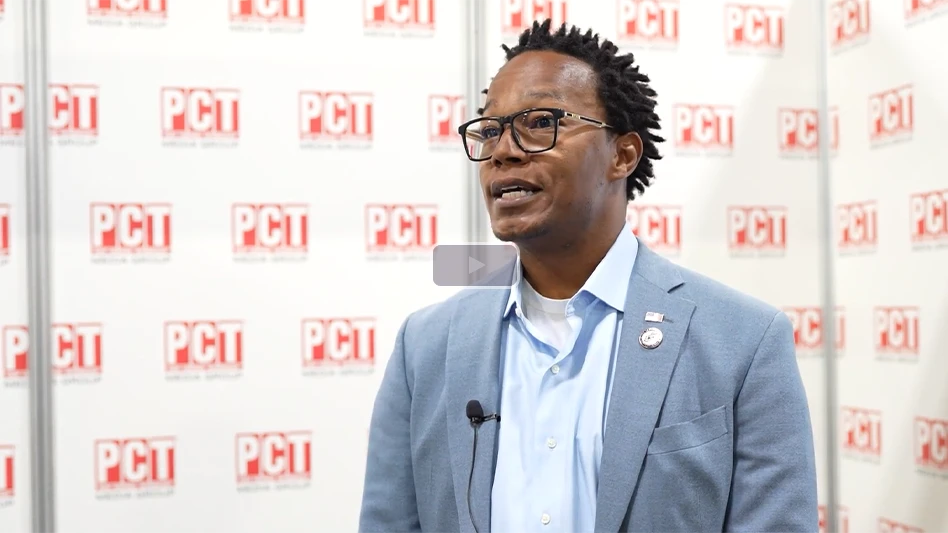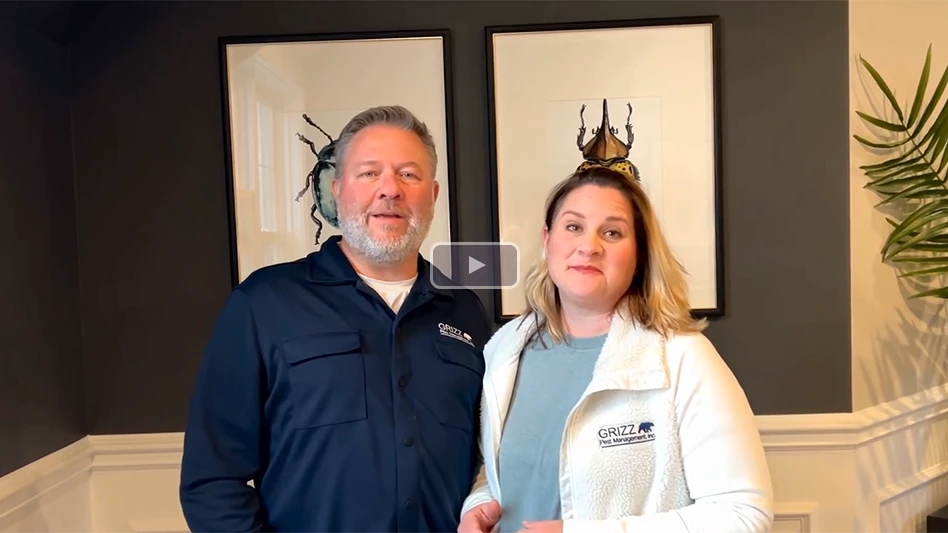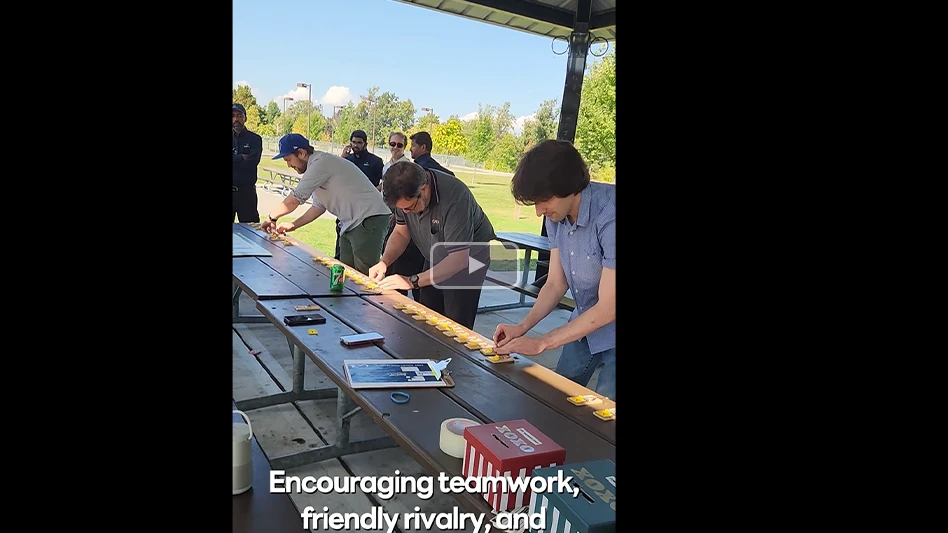On May 16, 2010, urban entomologists from around the country gathered in Portland, Ore., at the DoubleTree Hotel for the 12th National Conference on Urban Entomology (NCUE). Representation from academia, industry, government (state and national) and private consultants were present. The following three days were packed with presentations covering a wide variety of topics relating to urban entomology. More than 200 individuals attended the meeting, and a total of 102 papers were presented covering a wide variety of urban entomology topics. The overall number of presentations was up this year from the last meeting, which was held in 2008 in Tulsa, Okla.
The first meeting of the NCUE was held in College Park, Md., and organized by Dr. Eugene Wood, professor of entomology at the University of Maryland. Since that time the conference has been held every other year with the goal of promoting the transfer of entomological knowledge between all those involved in urban pest management and celebrating the study of arthropod pests in our ever-changing urban environment. The early vision for this conference was to hold a forum where academics, consultants, ag-chemical representatives and students could transfer information in a relaxed format. To this day the conference focuses on practical presentations that pest management professionals can use to broaden their knowledge base of urban pest biology and behavior and learn of the newest university research projects, management strategies and performance attributes of the latest chemistries being developed for use against urban pests.
The presentations were organized into submitted paper sections as well as organized symposia on a variety of topics. What follows is a first-person review.
MOLECULAR BIOLOGY. Dr. Mike Scharf of the University of Florida and Dr. Grzegorz Buczkowski of Purdue University organized a symposia titled "Molecular Techniques and Urban Entomology — the Why and the How." Molecular biology is certainly not a new science, but its application in urban entomology now has a stronger foothold than ever. To many that grew up performing pest control with a flashlight, a B&G sprayer and bulb duster, the why and how of this exciting branch of science is quite a stretch for us, but these symposia consisted of six very well put together presentations that demonstrated the practical or relevant aspects of molecular biology in our field.
The two main areas where it is being used are first in systematics, whereby scientists are attempting to discern one population of insects from another, most notably with termite populations. What makes up a colony of individuals? When a claim of "total colony control" is offered, yet more termites show up in a treated area, what does this mean? By using what are referred to as "molecular markers," what can we learn about how a termite population develops, travels, feeds and reproduces? The second area is studying DNA sequencing (making lots of like DNA from a very small sample of it). This tool is used to screen tens of thousands, even hundreds of thousands, of compounds to determine if they have any potential insecticidal properties, and may one day be used to make the next generation of highly specific and low/non-toxicity to non-target compounds.
Additionally, specificgenes now are being studied that regulate cell death or mutation that might one day be used to create genetically altered populations of insects that could aid in the control of pest populations. Although it is impossible to say when this technology will be available in a bottle or jug to spray on termites or cockroaches, much of this research is way up stream (as the saying goes), but it is certainly a beginning point for what will sure to be new control methodologies that we never dreamed possible in the future.
TERMITES. Termites once again dominated the paper presentations at this meeting. There were several papers focused on the Formosan subterranean termite, its persistence in the French Quarter of Louisiana, its association with brown and white rot fungus, and an interesting paper delivered by Rudy Scheffrahn on the relationship of marine dockage sites with land-borne infestations of invasive species.
Xing Ping Hu of Auburn University presented a paper that discussed the orientation and navigational strategies used by termites to build (and subsequently follow) trails. The research team from Dow AgroSciences presented a history of the innovations of the Sentricon Termite Colony Elimination System and a number of papers covering the new Recruit HD termite bait station. Dr. Raj Saran discussed DuPont’s Altriset, a new generation non-repellent termiticide with the active ingredient calteryx, and its effect on termite tunneling and horizontal transfer.
Dr. Shripat Kamble, from the University of Nebraska, organized a symposium titled "Soil Environment Affecting Effectiveness of Termiticides." These papers are normally scattered throughout the huge number of papers on the general topic of termites. It was nice to see them gathered here in one symposium on this specific topic.
The fate of a termiticide in the soil has long been a source of debate and scientific evaluation. Of course, for a termiticide to be effective it must withstand the various forces of nature to remain "available" to kill termites; however, today’s regulatory requirements require far more data than was once required to register a product and a debated public stance on the environmental fate of some of the more persistent molecules keeps this area of research alive and well. Paper topics included a historical perspective by Dr. Roger Gold of Texas A&M University — a discussion on termiticide interactions with soil pathogens, chemical reactions with soil itself that affect overall performance, the mobility of different termiticides in soil columns and the distribution of various products following "sub-soil" applications as affected by soil type.
ANTS. Research on ants consisted of a fair number of papers this year. Rochelle Hoey-Chamberlain presented a comprehensive study that she conducted on the ants of the Pacific Northwest. Linda Hooper-Bui discussed "Old Ants New Problems; New Ants Old Problems," which highlighted some of her research on leaf-cutting ants and crazy ants in the state of Louisiana. Another interesting paper provided some up-to-date information on two new pest species found in the New Orleans area, Odontomachus haematodus and Paratrechina pubens. It seems that every time we turn around there are new ant pest species in the urban environment to be concerned about. It makes you wonder about how many other species are out there that the researchers in academia and the PMP haven’t even encountered yet, especially in semi-tropical climates where ants thrive!
There were two papers discussing the newest pest ant species that has Texas in an uproar. The Rasberry crazy ant, Nylanderia sp. nr pubens, is spreading over a larger area in Texas and the rate of its dispersal suggests that it could become established throughout the U.S. southern states. Although this species does not sting nearly as often as the red imported fire ant, it is of concern because of the huge number of workers that are produced by a colony and their insidious ability to infest electrical junction boxes, short circuit wires and "infest" and damage computers. Two papers presented by Bayer Environmental Science covered its work on a new broad spectrum granular ant bait and Maxforce Quantum, the firm’s newest offering containing the active ingredient imidacloprid.
Additional ant papers were presented in a general submitted paper session. Dr. Karen Vail of the University of Tennessee presented recent work on perimeter treatments around homes and simulated structures for odorous house ant management. Hamilton Allen, a graduate student with Dr. Dini Miller of Virginia Tech, presented his research on the effects of broadcast applications for fire ants on non-target species. Dr. Daniel Suiter reviewed his current work with Argentine ants in Atlanta and Dr. Steven Kells from the University of Minnesota gave a paper on the development of an improved IPM program to protect retail and distribution facilities.
Bed Bugs. The submitted papers section on public health pests was dominated by none other than the bed bug, Cimex lectularis (L.). As we are all aware, the bed bug is the current king of the new "money" bugs in the urban entomology world. Many academic research programs that once studied cockroaches or ants have shifted their programs to research on this important pest. It has been 10 years since the bed bug drum really started to beat, and although we have learned a lot, there seems to be more questions than answers. The papers consisted of topics as varied as a study of life stages and adult sex ratios and what that means for dispersal (both male and female bed bugs require a blood meal to molt); to residual and larvicidal effects of current bed bug products; to a molecular biology paper discussing gene discovery in this pest. This section also included three papers on IPM in schools and public housing.
In addition to the previously mentioned bed bug papers, Dr. Ellen Thoms of Dow AgroSciences organized a symposia titled "Bed Bugs — New Lessons on an Old Pest — What Have We Learned?" This paper session was heavily attended and was a "who’s who" of our current industry bed bug experts. Dr. Michael Potter presented a paper reviewing some of the medical and societal impacts that bed bugs have on our urban environment. Dini Miller discussed all of the places that bed bugs can be found in her paper titled "Who is Living with Bed Bugs in 2010?"
Dr. Alvaro Romero and Dr. Changlu Wang reported on bed bug control with those products that are currently available and labeled for bed bug control. Thoms presented an interesting insight on the potential for bed bug control with fumigation, and Rick Cooper, Cooper Pest Solutions, closed the symposia with a thought-provoking presentation for all researchers and PMPs titled, "Bed Bugs: 10 Years Later: Have We Made Any Progress?" The conclusion Cooper made is that we have learned a lot, but we have just scratched the surface. Bed bugs, due to their nature to harbor practically anywhere in the structure and their elusive and terrifying (to the homeowner) feeding habits, will continue to be a pest that the urban entomologist will have to do battle with.
VESPID PESTS. Dr. Elray Roper of Syngenta organized a symposium titled "Vespid Pests In The Urban Environment: Threats and Opportunities." Several papers were presented by Syngenta researchers discussing their active ingredient thiamethoxam and its effectiveness against vespid wasps, yellowjackets, paper wasps and bald faced hornets in a number of different product formats.
William Donahue of Sierra Research Labs presented research on the evaluation of pressurized aerosol products on Polistes dominulus and Vespula pennsylvanicus. Jade McGill delivered a paper titled "Toward the Development of a Ready-To-Use Yellowjacket Bait." It described a proprietary formulation that shows promise as an effective bait if coupled with the proper active ingredient/pesticide. Whitney Cranshaw presented his evaluation of commercial traps and baits for vespid wasps in Colorado. A wide variety of these contraptions are available on the market to the PMP and homeowner alike. Dr. Michael Rust from the University of California, Riverside, also gave a paper on UCR’s research on yellowjacket control.
DOWN TO BUSINESS. The 2010 NCUE concluded, as it always does, with the final business meeting. Several topics were covered but most importantly the site for the 2012 NCUE was discussed, voted on and accepted. The next conference will be held in Atlanta, Ga., sometime in the spring, the exact dates to be determined. Attending one of these conferences is a great way to expand your knowledge on the cutting edge research and product developments in our industry.
The author is an urban entomologist residing in Racine, Wis. He can be reached at rkopanic@giemedia.com.
The 12th National Conference on Urban Entomology was held this spring in Portland, Ore. Here are the termite, ant and bed bug highlights from a leading urban entomologist.
******************************************************
NCUE Focuses on Students
The NCUE has a rich history in recognizing its student participants with monetary scholarships and special paper presentations and this year was no different. Three student scholarship award winners presented their research in a 15-minute paper format. Each of these students competed with others prior to the meeting for a $1,500 award. These students are examples of the bright new minds that choose to study in the area of urban entomology.
Timothy J. Husen, a Ph.D. student at the University of Nebraska, Lincoln, discussed his work on elucidating the gut chitinase gene-enzyme system of the eastern subterranean termite. This was the first of many papers covering an increasingly popular area of urban entomology research — using molecular biology and genomics to further understand pest complexes and uncover new methodologies for control beyond conventional pesticides.
Christopher Scocco, a master’s student from the University of Georgia, presented a paper titled ‘”Occasional Invaders in the Suburban Landscape.” Scocco’s research focuses on the wide number of pests that loosely are defined as “occasional invaders” by urban entomologists.
Finally Benjamin Adams, an undergraduate student from the Louisiana State University (under the direction of Dr. Linda Hooper-Bui) presented a paper titled “Raft Behavior of Red Imported Fire Ants.”
Separate from the student scholarship presentations was the student paper competition. In this format, a prize is given for the best three papers as judged by six judges. Students are scored for the relevance of their work as well as the manner in which it is presented. This year there were enough papers submitted to field two different sections. Overall, 14 papers were presented. As usual, research pertaining to termites made up the bulk of the presentations (60 percent). Three papers on ants, one on bed bugs, one documenting the biogeography of Triatoma sanguisuga (kissing bugs) on a barrier reef island off the coast of Georgia, and one pertaining to IPM in schools rounded out the field.
When the dust settled and the results were tallied, this year’s student competition winners were: 1st Place — Andrea Polanco from Virginia Tech University with a paper titled “Life Tables and Mathematical Models: A Contribution to the Life History Of Cimex lectularis (L.),” 2nd Place — Nirmala Hapukotuwa from the University of Hawaii with a paper titled “Comparative Study of Tunneling and Feeding Preferences of Coptotermes formosanus Shiraki and Coptotermes gestroi Wassmann in Foraging Arenas,” and 3rd Place — Su Yee Lim from the University of Georgia with a paper titled “Species Distributions and Phylogenetic Relationships of Reticulitermes spp. Found in Georgia, USA.”
The student competition is an important part of this meeting. By presenting their research, students learn public speaking skills and get to share their own piece of science with the broader urban entomology community. Additionally they are able to get to know individuals in the industry. A well-honed and professionally presented piece of research can lead to employment opportunities down the road.
******************************************************
Reierson Presents Mallis Memorial Award Lecture
Each NCUE conference kicks off with the Mallis Memorial Award Lecture, given by the recipient of the Distinguished Achievement Award in Urban Entomology. The 2010 recipient was Donald A. Reierson, from the department of entomology, University of California, Riverside. Reierson presented a lecture titled “If You Come to a Fork in the Road, Take it!” Throughout the following 60 minutes, Reierson reviewed just some of the research projects that he has been involved with during his long career in urban entomology, which spans more than four decades.
Working with Dr. Mike Rust, professor of entomology at the University of California, Riverside, he has collaborated with dozens of academics, graduate and undergraduate students in entomology, and industry professionals publishing many papers, and giving countless lectures at scientific meetings. Reierson covered his work on cockroach and ant baits, mentioning the famous choice experiments conducted with the “Ebeling Choice Box,” the study of horizontal transfer of toxicants between ants, the development of a “virtual bait station” for ants or other social insects, many different experiments with toxicant transfer to individual pest species, and how an understanding of their biology and behavior has aided in the development of better finished products for the PMP. He also mentioned his work with lethal and sub-lethal temperatures (heat/cold) to control pest infestations in accounts where pesticides are not necessarily easily utilized or desired. It was a quite enjoyable presentation that celebrated his work over the years. — RK
******************************************************
Green: What’s it Mean?
Dr. Dan Suiter organized a symposium titled “Green Pest Management” at this year’s NCUE Conference. The symposium featured a mixture of position papers on the definition of green pest management, its history, and a state regulatory perspective of minimum risk pesticides, as well as two papers, one from Dr. Arthur Appel and one from Suiter himself on the repellency and toxicity of various plant essential oils on urban pests
******************************************************
The Changing Face of URBAN Pest Management
Ron Harrison and Pat Copps of Orkin organized a symposium titled “The Changing Face of Urban Pest Management.” Although I did not get to attend this particular seminar I was able to speak to a few individuals that did. The symposia covered a wide variety of broad topics in a 12-minute paper format that allowed each presenter to speak to a different aspect of urban pest management. The purpose of the symposia was to demonstrate the wide variety of disciplines that Orkin engages in beyond simply providing pest control service to their clients. The paper topics were: residential pest control; training; sophisticated pest problems; technology; product innovation; termites; Canadian regulatory perspective; international perspective; and academia-research funding. — RK

Explore the September 2010 Issue
Check out more from this issue and find your next story to read.
Latest from Pest Control Technology
- Termite Control Sales Strategies
- NPMA Announces ELP Class of 2025
- Termite Control Tools and Equipment for PMPs
- Choe Reviews Drywood Termite Geographical Hotspots, Latest Research Findings
- Mosquito Squad Announces Rebranding to Mosquito Squad Plus
- Pest Control Equipment: If it’s Critical, Back it Up!
- In Memoriam: Marybeth Wonson
- In Memoriam: Layton Word





